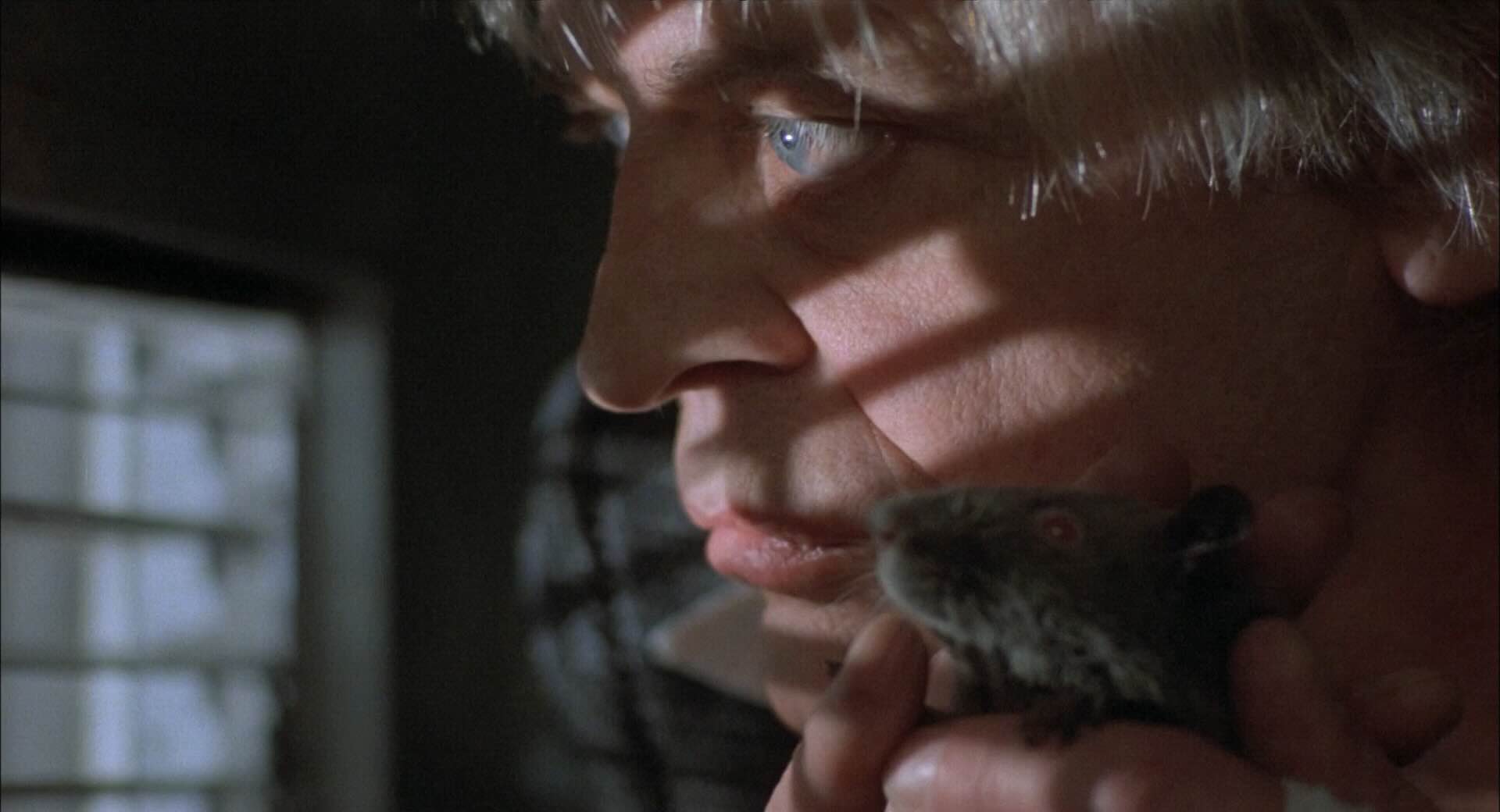An excerpt from "Gunther's World: One Landlord's Nazi Playground" by Sarah Fensom, as essay in the Kill Yr Landlords zine.
David Schmoeller’s film Crawlspace (1986) has a simple conceit: what if your landlord was actually a Nazi? Schmoeller gives the concept life by casting Klaus Kinski as Dr. Karl Gunther, the son of an SS officer and a disgraced former surgeon who owns a mid-sized apartment building within walking distance of Brown University. Gunther fills the apartments with beautiful and talented women: there’s a songwriter, who makes her lover ambush her by climbing through the window; a soap opera actress, who only dates rich, older men; and a Southern belle, who loves M&M’s. There’s also Lori Bancroft (Talia Balsam), a fresh-faced student looking for a new start and a room near her classes. But Crawlspace isn’t about the girls, it’s about Gunther, who incessantly spies on them through the apartment building’s ventilation system. He uses this metallic labyrinth to create disturbing noises, deploy rats, and gather information on his tenants. Then, he murders them using elaborate, DIY-killing machines, only to fill their apartments with hot, new renters to bleed.
The film sets up that Gunther’s father was Karl Werner Reitlinger, the principle designer of the instruments of torture used by the Einsatzgruppen in over 100 concentration camps. As a boy, Gunther was a member of the Hitler Youth before being shuffled off to Argentina by his father—prior to his execution by an international military tribunal for crimes against humanity in 1945. Gunther went on to become a surgeon at the National Hospital in Argentina, where he began practicing euthanasia. The practice, he discovered by reading his father’s diaries in 1971, was also the officer’s excuse for killing Jews. And Gunther writes in his own journals that it was in 1973 that his lust for murder began, after accidentally taking a healthy man's life. “I used to kill in the name of science,” he writes. “Now I kill because I’m addicted to killing. It’s the only way I can feel alive.” Owning a building provides the perfect mechanism to feed his addiction—there’s no shortage of young people looking for a large one-bedroom with pre-war charm and lots of windows.
The film’s action never leaves the apartment building, which is actually the same set in Rome that Crawlspace’s producer and frequent Schmoeller collaborator, Charles Band, used for Troll (1986). Gunther occupies an apartment decorated with heavy dark wood furniture and deep red walls—a marked difference from the pastel and jewel-toned rooms of his female tenants. But his real domain is the building’s attic, where he hangs out and accesses the ventilation system. There, he stores his various weapons, trained rodents, and Nazi memorabilia, including a projector that he has loaded with films of, surprise, Hitler’s speeches (“Heil Gunther,” he salutes while enthused by one of these reels). In the attic, is also Martha, a woman who Gunther keeps in a cage; he’s cut her tongue out and continues to torture her with his rhapsodies about murder and his father. She begs Gunther to kill her, but he laughs the request off and says, “Who would I have to talk to?”
The attic is the site of the film’s first kill, where Schmoeller stages a Hitchcockian opening. A young tenant rounds the red-carpeted stairs carrying a flashlight. The camera, helmed by Sergio Salvati, Lucio Fulci’s frequent collaborator, swoops overhead, making the climb go on seemingly forever. The score, written by Pino Donaggio, the composer behind many of Brian DePalma’s Hitchock-inspired themes, swells dramatically. The tenant enters the attic looking for Gunther, and after she eventually finds him, she’s stabbed in the back by a swinging blade—a contraption that feels more Theater du Grand Guignol than straight-up Nazi. “Too bad, I actually liked you,” Gunther laments. Then, an opening credit sequence begins, where the camera speeds through the ventilation ducts, ushering the viewer into the innards of the building and Gunther’s private hunting ground. Several of Schmoeller’s films begin this way, with the first character seen on-screen meeting a gruesome, very theatrical death before the director introduces the real protagonists. It’s in part an homage to Alfred Hitchcock’s Psycho (1960), but it’s also a form of indoctrination into the worlds of his passionate, almost artist-like killers.
Crawlspace screens Wednesday, November 13, at Alamo Drafthouse New Mission as part of "Kill Yr Landlords." Screen Slate's Kill Yr Landlords zine is available for purchase online and at Drafthouse on Wednesday.






